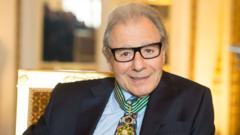Dick Cheney, former Vice President of the United States, lived a life marked by his struggle with heart disease, which began with his first heart attack at just 37 years old. His journey lasted until his passing on Monday, a result of complications related to pneumonia and cardiovascular conditions.
Throughout his life, Cheney faced numerous health challenges that highlighted the complexities of heart disease and the varied treatments involved. He underwent quadruple bypass surgery, multiple angioplasties, and had a pacemaker put in to help regulate his heartbeat. His health continued to decline, culminating in the need for a left ventricular assist device (LVAD) in 2010, which was designed to aid his heart's pumping function.
A Milestone in Heart Transplants
In March 2012, Cheney, at the age of 71, received a heart transplant. This life-saving procedure has become more common, with over 70% of heart transplant recipients surviving at least five years after surgery. Notably, Cheney was among the few individuals over 65 who received a new heart that year, contributing to the gradually rising number of heart transplants performed.
Despite these advancements, the demand for transplantable organs remains critical. Many patients suffering from advanced heart failure are not placed on transplant lists due to a significant shortage of available organs. In 2022, 4,572 heart transplants were performed, an increase since Cheney's transplant in 2012 when only 2,378 were completed.
Cheney's story underscores not only the personal struggles he faced but also the broader societal challenge of addressing heart disease, America's leading cause of death. As the medical community continues to innovate in treatments and procedures, there remains a pressing need for organ donors to help those in critical need.






















